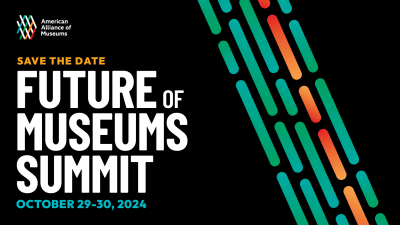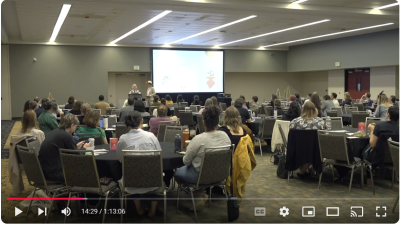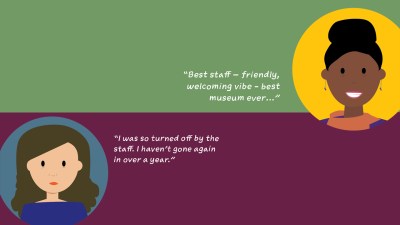Ella Mitchell, who is interning in AAM’s Government Relations and Advocacy department, reports on her interview with director Charlene Akers of the Stearns History Museum, an early volunteer for the Let’s Move! Museums and Gardens campaign. This post is part of a continuing series documenting how museums are helping to combat the trends of increasing childhood obesity and decreasing fitness, contributing to a healthier future.
Given the current projects at the Stearns History Museum in St. Cloud, Minn., you might wonder whether Charlene Akers and her staff were the inspiration for Michelle Obama’s Let’s Move! Museums and Gardens. The Stearns opened its latest exhibit, “The Working White House: Two Centuries of Tradition and Memories,” from the Smithsonian Institution Traveling Exhibition Service (SITES), on June 18, soon after the museum’s summer White House Children’s Garden celebrated its inaugural plantings.
The seeds for this garden/exhibit collaboration were sown last year when a volunteer suggested transforming an overgrown plot on the museum’s property into a place to teach kids how to grow vegetables. The museum had eagerly anticipated the “Working White House” exhibit since July 2009, and in light of all the press about First Lady Obama’s vegetable garden, a garden seemed like a perfect match. Local children were recruited to the project even before the ground thawed, growing seedlings for the garden in nearby elementary school classrooms this spring.
Now in its fourth week, the White House Children’s Garden is thriving under the care of its budding botanists. Each Thursday throughout the summer, 40 children ages 7–11 will till the soil, yank out weeds and tend sprouts as they learn how to cultivate their own food and understand the relationship between healthy eating and strong bodies. Partnerships between the Stearns and individuals and organizations in the community provide opportunities for the kids to learn more practical skills as well. Last week local chiropractor Dr. Mark Roerick visited the museum and led an animated lesson on stretching in preparation for the day of gardening ahead. Later in July, pediatric nutritionists from nearby St. Cloud Hospital will teach about smart food choices.
Skip over related stories to continue reading articleMs. Akers doesn’t consider this foray into farming to be a peripheral project for the organization. On the contrary, it is integral to fulfilling the goals of the Stearns Museum. “Our mission is to engage people in the exploration of [Stearns] County’s diverse heritage by making connections to the past, perspective on the present, and inspiration for the future,” she commented in a recent interview. “People in the past had gardens, in the present they have gardens, and hopefully they will in the future.” By teaching children about gardening, as well as the historical context of food production, Akers hopes that “kids will be inspired to get out, get active, and raise their own food Hopefully they will realize that they have to take part in their own health – it’s just not from a doctor’s office.”
The history of Stearns County is rooted in 150 years of agricultural activity, but that doesn’t mean that a garden can’t fit just as well into the mission of an inner-city or any other museum. Akers points out that growing vegetables at home has never been limited to the fields of the Corn Belt. “Gardens have always been a part of peoples’ lives: even in New York City they have little tomato plants out on balconies.”
Accordingly, she encourages other museums to add some green to their routine and consider joining the Let’s Move! Museums and Gardens initiative. Innovative programs are essential for museums in the 21st century. As Akers says, “We’ve got to expand our roles. We can’t operate as one-track operations; we’ve got to be diverse while still fulfilling our missions.” For the Stearns, the garden initiative also contributes to the bottom line. Not only is the White House Children’s Garden teaching valuable lessons to local children, but the museum has also gained positive publicity and local interest. “In fact,” Ms. Akers says, “We received a grant from the Smithsonian to provide educational programming for kids this summer and funding from The Julianne Williams Fund as a result of the Children’s Garden.”
The Stearns Museum is committed to integrating the Children’s Garden and its lessons into their regular museum programming. In the coming summers, the museum will transform the plot of land first into an native plant and herb garden to correspond with an exhibit on the history of Native Americans, and then to a victory garden for a show on World War II. And when the kids have to put down their trowels in the winter, they can still stretch their muscles by hiking or cross country skiing on the 10 miles of trails on the museum’s property throughout the year.
Teaching about nutrition and healthy bodies isn’t a goal only for science or children’s museums, as the Stearns History Museum demonstrates with its thoroughly integrated Children’s Garden program. Partnering with First Lady Michelle Obama and Let’s Move! Museums and Gardens is the icing on the cake (or, perhaps more appropriately, the dressing on the salad) of this meaningful project.
The Let’s Move! Museums and Gardens initiative brings the fight against obesity in America to museums and gardens of all types. By signing up for the program, museums are part of a partnership not only with the White House, but also with a larger network of national associations and museums. For more information and to register, please visit: http://www.imls.gov/about/letsmove.shtm. Please leave a note in the comments if you’ve heard of other museums showing their green thumbs, taking a closer look at nutrition, or getting people moving!








Comments